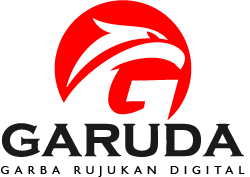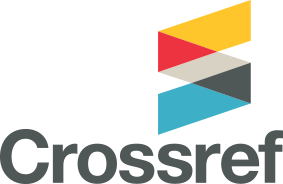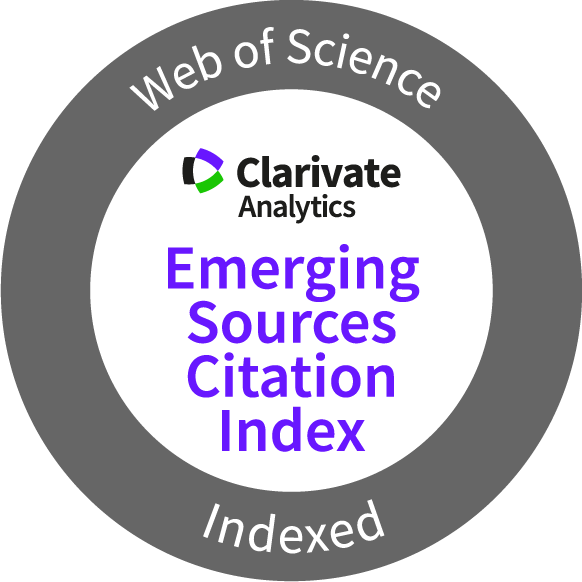Effect of Curcumin on Nitric Oxide and Endothelin-1 Levels in L-NAME-Induced Preeclamptic Wistar Rat
Abstract
Preeclampsia is a pregnancy disorder marked by the onset of hypertension after the 20th week, posing risks such as cardiovascular disease. Curcumin, a commonly consumed herbal medicine, has been investigated as a potential antihypertensive agent in mouse models of preeclampsia. This study took place in the Bioscience Laboratory of Universitas Brawijaya from March to August 2023, employing a true experimental design with various groups of mice receiving different treatments. Nitric oxide (NO) and endothelin-1 (ET-1) levels were measured using calorimetry and ELISA. The rats were divided into five groups: positive control, negative control and P1, P2, and P3 as the treatment groups. Treatment grups received fifferent curcumin doses of 30mg/kgBW/day, 50mg/kgBW/day, and 100mg/kgBW/day for P1, P2, and P3, respectively. Data analysis using the One-Way ANOVA and Post Hoc LSD revealed that curcumin at 100mg/kgBW/day significantly increased the NO level of 47.75±22.6 and decreased the ET-1 level of 67.03±24.47 when compared to the positive control (p<0.05). However, the 30mg/kgBW/day and 50mg/kgBW/day doses did not significantly affect the NO and ET levels. In conclusion, curcumin supplementation shows positive effects on NO and ET-1 levels in L-NAME-induced preeclamptic Wistar rats, highlighting its potential as an effective intervention for managing this pregnancy-related disorder.
Keywords
Full Text:
PDFReferences
- Gestational Hypertension and Preeclampsia: ACOG Practice Bulletin, Number 222. Obstet Gynecol. 2020;135(6):e237–60. doi:10.1097/AOG.0000000000003891
- Tjandraprawira KD, Kusumah AY, Kamilah AY, Putri DI, Ananta MR, Sari SP, et al. Management and perinatal outcomes of hypertensive disorders of pregnancy in a low-resource setting in Indonesia. SAGE Open Med. 2021;9:20503121211060194. doi:10.1177/20503121211060194
- Jeon BH. Endothelial Dysfunction: From Pathophysiology to Novel Therapeutic Approaches. Biomedicines. 2021;9(11):157. doi:10.3390/biomedicines9111571.
- Rahardjo B, Widjajanto E, Sujuti H, Keman K. Different levels of IL-1α, IL-6, TNF-α, NF-κB and PPAR-γ in monocyte cultures exposed by plasma preeclampsia and normotensive pregnancy. Pregnancy Hypertens. 2014;4(3):187–93. doi:10.1016/j.preghy.2014.03.001
- Rahardjo B, Mauludyah Z. Pengaruh ekstrak etanol daun ciplukan (physalis angulata l.) terhadap penurunan ekspresi Tnf – Α dan Nf–Kb plasenta, dan peningkatan berat plasenta tikus wistar model preeklampsia. Malang: Brawijaya University; 2020. p. 1–7.
- Opichka MA, Rappelt MW, Gutterman DD, Grobe JL, McIntosh JJ. Vascular Dysfunction in Preeclampsia. Cells. 2021;10(11):3055. doi:10.3390/cells10113055
- Rahardjo B, Rahmawati W, Rahasti A, Retnaningrum DN, Sujuti H, et al. Effect of Evoo on Mda, Adma and no Level in Rattus Norvegicus Pre-Eclampsia Model. Indian J Public Health Res Dev. 2020;11(3):1874–80.
- Hewlings SJ, Kalman DS. Curcumin: a review of its effects on human health. Foods. 2019;6(10):92. doi:10.3390/foods6100092
- Filardi T, Varì R, Ferretti E. Curcumin: could this compound be useful in pregnancy and pregnancy-related complications. Nutrients. 2020;12(10):3179. doi:10.3390/nu12103179
- Tossetta G, Fantone S, Giannubilo SR. The multifaced actions of curcumin in pregnancy outcome. Antioxidants. 2021;10(1):126. doi:10.3390/antiox10010126
- Qi L, Jiang J, Yu G, Zhang X, Qi X, Zhang J, et al. Dietary curcumin supplementation ameliorates placental inflammation in rats with intra-uterine growth retardation by inhibiting the NF-κB signaling pathway. J Nutr Biochem. 2022;104:108973. doi:10.1016/j.jnutbio.2022.108973
- Rahardjo B, Widjajanto E, Sujuti H. Curcumin decreased level of proinflammatory cytokines in monocyte cultures exposed to preeclamptic plasma by affecting the transcription factors NF-κB and PPAR-γ. Biomarkers, and Genomic Medicine. 2015;6(3):105–15. doi:10.1016/j.bgm.2014.06.002
- de Alwis N, Binder NK, Mangwiro YTM, Beard S, Pritchard N, Kadife E, et al. Actions of esomeprazole on the maternal vasculature in lean and obese pregnant rat with impaired nitric oxide synthesis : a model of preeclampsia. Int J Mol Sci. 2022;23:8185. doi:10.3390/ijms23158185.
- Zhu H, Zhu W, Hu R, Wang H, Ma D, Li X. The effect of pre-eclampsia-like syndrome induced by L-NAME on learning and memory and hippocampal glucocorticoid receptor expression: A rat model. Hypertens Pregnancy. 2017;36(1):36–43. doi:10.1080/10641955.2016. 1228957
- Smith DD, Costantine MM. The role of statins in the prevention of preeclampsia. Am J Obstet Gynecol. 2022;226(2S):S1171–81. doi:10.1016/j.ajog.2020.08.040
- Longobardi C, Damiano S, Andretta E, Prisco F, Russo V, Pagnini F. Curcumin modulates nitrosative stress, inflammation, and DNA damage and protects against ochratoxin a-induced hepatotoxicity and nephrotoxicity in rats. Antioxidants. 2021;10(8):1239. doi:10.3390/antiox10081239
- Ogi M, Seto T, Wakabayashi Y. A comparison of the utility of the urine dipstick and urine protein-to-creatinine ratio for predicting microalbuminuria in patients with non-diabetic lifestyle-related diseases -a comparison with diabetes. BMC Nephrol. 2022;23(1):377. doi:10.1186/s12882-022-02974-6
- Wang C, Liu X, Kong D, Qin X, Li Y, Teng X. Apelin as a novel drug for treating preeclampsia. Exp Ther Med. 2017;14(6):5917–23. doi:10.3892/etm.2017.5304.
- Shu W, Li H, Gong H, Zhang M, Niu X, Ma Y. Evaluation of blood vessel injury, oxidative stress and circulating inflammatory factors in an L-NAME-induced preeclampsia-like rat model. Exp Ther Med. 2018;16(2):585–94.
- Gerasimova EM, Fedotov SA, Kachkin DV, Vashukova ES, Glotov AS, Chernoff YO. Protein misfolding during pregnancy: new approaches to preeclampsia diagnostics. Int J Mol Sci. 2019;20(24):6183. doi:10.3390/ijms20246183
- Yalameha B, Nejabati HR, Nouri M. Cardioprotective potential of vanillic acid. Clin Exp Pharmacol Physiol. 2023;50(3):193–204. doi:10.1111/1440-1681.13736
- Tejero J, Shiva S, Gladwin MT. Sources of vascular nitric oxide and reactive oxygen species and their regulation. Physiol Rev. 2019;99(1):311–79. doi:10.1152/physrev.00036.2017
- D’andurain J, López V, Arazo-Rusindo M, Tiscornia C, Aicardi V, Simón L. Effect of curcumin consumption on inflammation and oxidative stress in patients on hemodialysis: a literature review. Nutrients. 2023;15(10):2239. doi:10.3390/nu15102239.
- Santos-Parker JR, Strahler TR, Bassett CJ, Bispham NZ, Chonchol MB, Seals DR. Curcumin supplementation improves vascular endothelial function in healthy middle-aged and older adults by increasing nitric oxide bioavailability and reducing oxidative stress. Aging (Albany NY). 2017;9(1):187–208. doi: 10.18632/aging.101149.
- Choi Y, Tanabe Y, Akazawa N, Zempo-Miyaki A, Maeda S. Curcumin supplementation attenuates the decrease in endothelial function following eccentric exercise. J Exerc Nutrition Biochem. 2019;23(2):7–12. doi:10.20463/jenb.2019.0010
DOI: https://doi.org/10.15395/mkb.v56.3700
Article Metrics
Abstract view : 525 timesPDF - 227 times

This work is licensed under a Creative Commons Attribution-NonCommercial 4.0 International License.

MKB is licensed under a Creative Commons Attribution-NonCommercial 4.0 International License
View My Stats






